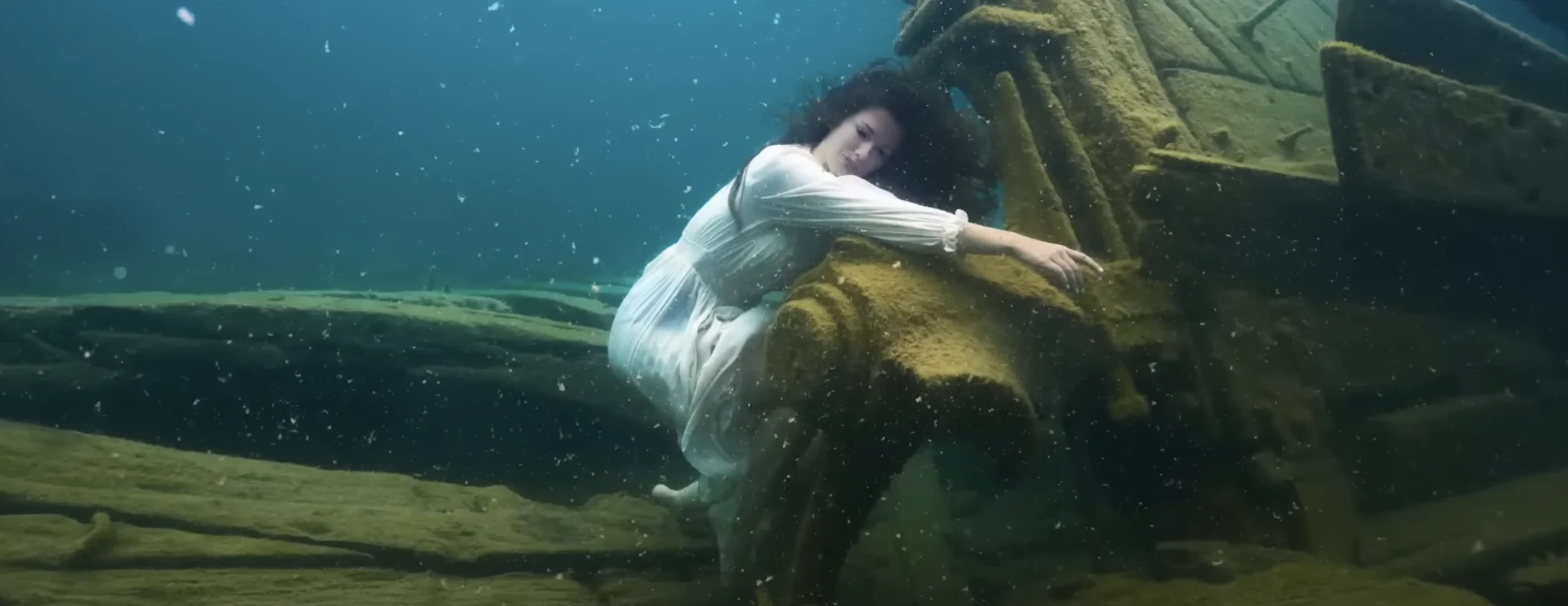
4 factors that have led to a 'golden age' of Great Lake shipwreck discoveries
There's never been a better time to find, explore and document shipwrecks on the Great Lakes, thanks to a combination of technology, environmental change and surge in public interest, according to those who uncover the sunken history of the world's largest lakes.
The University of Buffalo estimates more than 6,000 shipwrecks are on the bottom of North America's five Great Lakes, which, since the late 1600s, have been lost in wars, accidents, or frequent and powerful storms.
In the last 18 months, three previously unknown Great Lakes shipwrecks have made headlines around the world, from the steel bulk freighter Huronton, the 19th-century cargo steamer Africa, and in February, the Second World War-era freighter Arlington.
RELATED: 126-year-old, 'well-preserved' ship found in Lake Huron
Explorers say the pace of new discoveries has quickened, thanks to new technologies, climate change, invasive species and a surge in public interest.
Technology developments aid explorers
"I've lived at the most fortunate time possible for being an underwater explorer because of the developments in technology," said Jill Heinreth, a full-time underwater explorer and explorer-in-residence for the Royal Canadian Geographical Society.
WATCH: New shipwreck discovered in Lake Superior has a mysterious backstory
SEE ALSO: Canadian film crew uncovers century-old shipwreck in stunning Lake Huron find
She said cameras, drones, underwater scooters, even breathing apparatus have all improved, and in many cases have become cheaper, over her 30-year diving career, during which she's documented everything from underwater caves to ghostly shipwrecks.
"We've gone from just using a single scuba tank on our backs to using something that's much more akin to what an astronaut wears for a space walk," Heinreth said. "It's called a rebreather and it increases our range, our time and our depth capabilities by recycling our exhaled breath."
Underwater drones in particular have led to a number of shipwreck discoveries. Most recently, the Africa was found in Lake Huron by a husband and wife team while filming the upcoming TVO documentary All Too Clear: Beneath the Surface of the Great Lakes.
The impact of climate change
This winter saw the lowest level of ice ever recorded on the Great Lakes. It's meant lower lake levels and higher rates of erosion along sandy bluffs, devastating coastlines and, in some cases, uncovering lost pieces of history.
WATCH: Film crew discover 128-year-old shipwreck in Lake Huron during shoot
Durrell Martin, president of Save Ontario Shipwrecks, told CBC's Afternoon Drive on Friday that the shifting coastlines have unearthed a number of discoveries, including a 600-year-old dugout canoe in Salmon Trout Lake, a small inland lake about a 20-minute drive north of Bancroft.
"This came due to frost heaves and erosion from increased run-off of water," he said. "This is about halfway between Peterborough and Ottawa, and the Ontario Marine Heritage Committee has been documenting this unusual find of Canada's pre-colonial history."
Martin said more discoveries are likely to be made this spring as communities around the Great Lakes experience increased erosion along their shores, caused by a lack of ice on the lakes.
Invasive species
The introduction of invasive zebra and quagga mussels from Europe through the ballast tanks of freighters on the Great Lakes has made the murky turquoise waters of the Great Lakes crystal clear.
WATCH: Zebra mussel costing Canada millions
"In the early days, I once literally ran face first into a ship I couldn't see in front of me," Martin said. "Now I can see 200 feet in front of me.
"There are wrecks being found on Google Earth and people are literally finding them on their computer through satellite imagery."
The lakes have become so clear that an Ontario man has set a global record.
Hamilton photographer Steve Haining used the now crystal clear waters to his advantage last year, when he and Brantford model Ciara Antoski set a Guinness World Record for longest underwater photo shoot last year in Lake Huron amid the wrecks of the Fathom Five National Marine Park in Tobermory.
WATCH: These stunning photos from Tobermory's icy waters have set a world record
Increased public scrutiny
With technology making it easier to document and find shipwrecks in clearer waters, more people are becoming interested in the phenomenon of sunken history.
Shipwreck videos and pictures rack up millions of views on social media, while social media groups dedicated to documenting the finds have tens of thousands of followers. New discoveries make headlines around the world, including in the New York Times, which recently declared this a "Golden Age" of shipwreck discovery.
Kayla Martin, a 2023 Royal Canadian Geographical Society Expedition grant recipient, recently shared a 3D digital model of the Oliver Mowat, a sunken three-masted wooden ship, that garnered thousands of shares on Facebook.
'Golden age' to last only 30 years
Explorers say while this is a golden age, it won't last long.
The cold, deep and relative darkness of the Great Lakes have proved to be ideal conditions for preserving shipwrecks dating back to the 17th century, but with climate change and the introduction of invasive mussels, that's changing.
Clearer water means more light filters down to the wrecks, many encrusted by zebra mussels whose filaments and feces gradually eat away at the sunken vessels.
"This really is the golden age of discovery," Durrell Martin said. "We feel the window's probably got about 20 to 30 years left."
Martin said the slow disintegration of Great Lakes shipwrecks is another factor in the pace of discovery.
"[It's] why there's such a drive to record all of these shipwrecks that are being found."
This article, written by Colin Butler, was originally published for CBC News on April 7, 2024. Videos are courtesy of The Weather Network.
Header image courtesy of Steve Haining, provided to The Weather Network.





